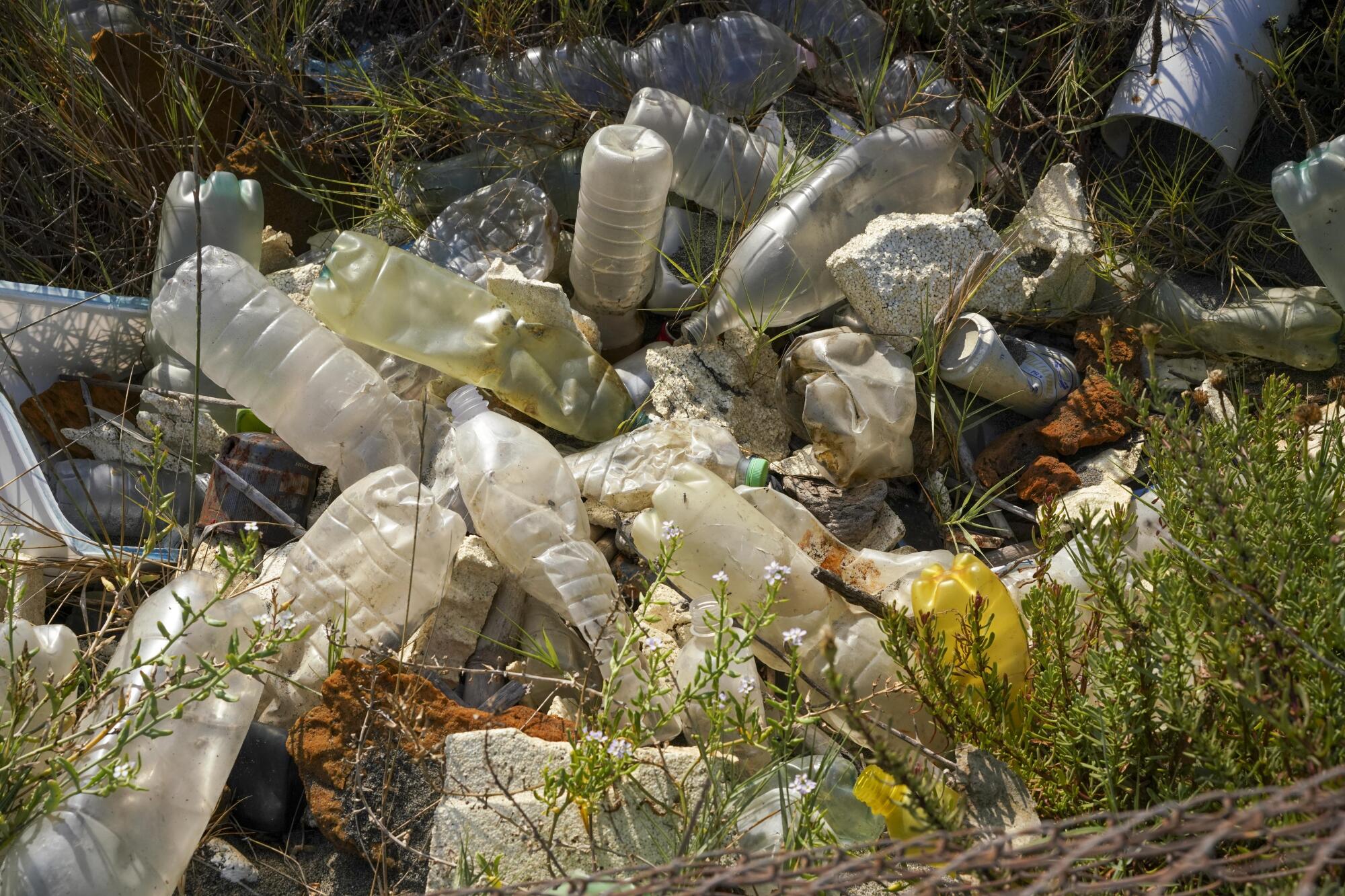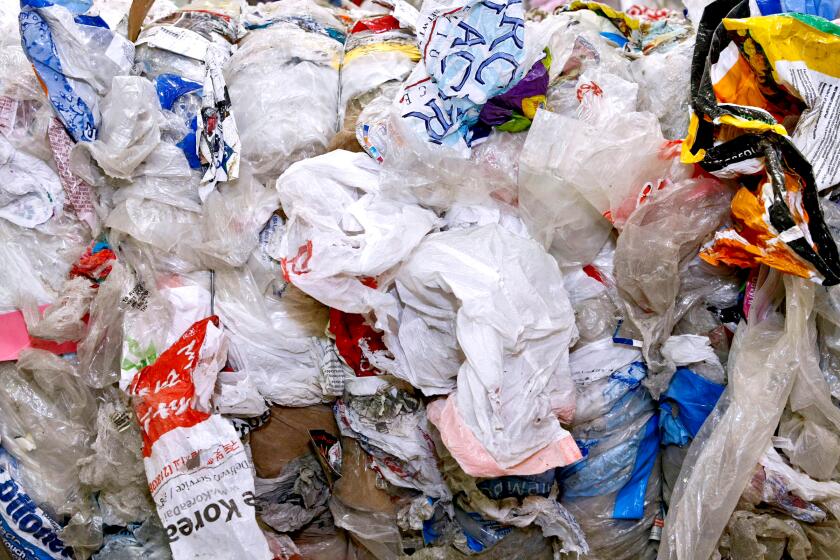
- Share via
President Biden announced a new goal Friday to phase out the purchasing and use of single-use plastics across the federal government by 2035.
“Communities across the United States and around the world are facing a plastic pollution crisis,” read a statement issued by the White House.
Researchers found high levels of microplastics in human and dog testes. They say their presence could be behind a trend in diminishing sperm quantity and quality around the globe.
The action is part of a government strategy to “target plastic pollution at production, processing, use and disposal,” according to a government report titled “Mobilizing Federal Action on Plastic Pollution: Progress, Principles, and Priorities.”
The new initiative seeks to eliminate single-use plastics in packaging by 2027, and in all food service operations by 2035.
The announcement follows a 2022 U.S. Department of Interior Secretarial Order aimed at phasing out single-use plastics in national parks and other public lands — including Yosemite, Yellowstone and Grand Canyon — as well as a rule issued last month by the General Services Administration to reduce single-use packaging in federal purchasing.
Environmental groups were quick to express approval of Biden’s action.
“We applaud the Biden administration for committing to phase out single-use plastics,” Christy Leavitt, director of Oceana’s plastics campaign, said in a statement. “This positive step reduces U.S. reliance on single-use plastics, which harm our oceans, climate and communities.”
The U.S. government is the world’s largest purchaser of goods and services, Leavitt noted, meaning that “its purchasing decisions can have a global impact.”
Ten years after California passed landmark legislation to reduce plastic bag use, the tonnage of discarded bags has skyrocketed. What happened?
It will also have an impact on the plastics industry.
“We are disappointed in today’s White House announcement, which arbitrarily singles out plastic under the false pretense of a lower environmental impact,” Matt Seaholm, president and CEO of the Plastics Industry Assn., said in a statement.
Seaholm said the companies his trade group represents “are dedicated to keeping plastic waste out of the environment.”
He suggested the federal government instead improve the country’s recycling infrastructure — a practice underscored in the White House’s new strategy.
According to a 2022 Executive Order designed to help the federal government embrace sustainability, agencies were directed to “procure products and services in a cost-effective manner” that advances administration targets on energy, sustainability, climate adaptation and now single-use plastic reduction.”
“Agencies must consider a price unreasonable only when the total life-cycle costs, including measurable costs of any associated environmental impacts, are significantly higher for the sustainable product or service than for the non-sustainable product or service,” the order directs.
Researchers have discovered plastic everywhere they look — from the tops of the highest mountains to the depths of the ocean’s deepest trenches. It is in our food and water, and in every organism researchers have examined. It is also in people’s bodies: In their lungs, brains, hearts, blood, semen and breast milk. It is found in the first bowel movement a newborn baby makes after birth.
It is also the product of oil and gas, and therefore a large source of the greenhouse gases contributing to climate change.
Less than 6% of plastic in the U.S. is recycled.









